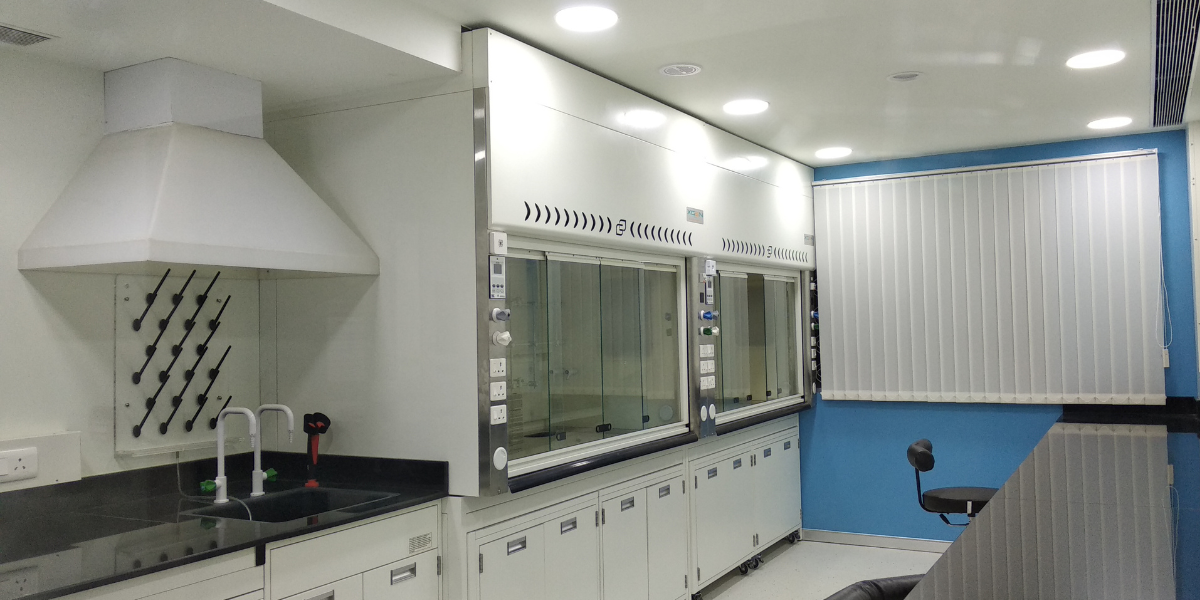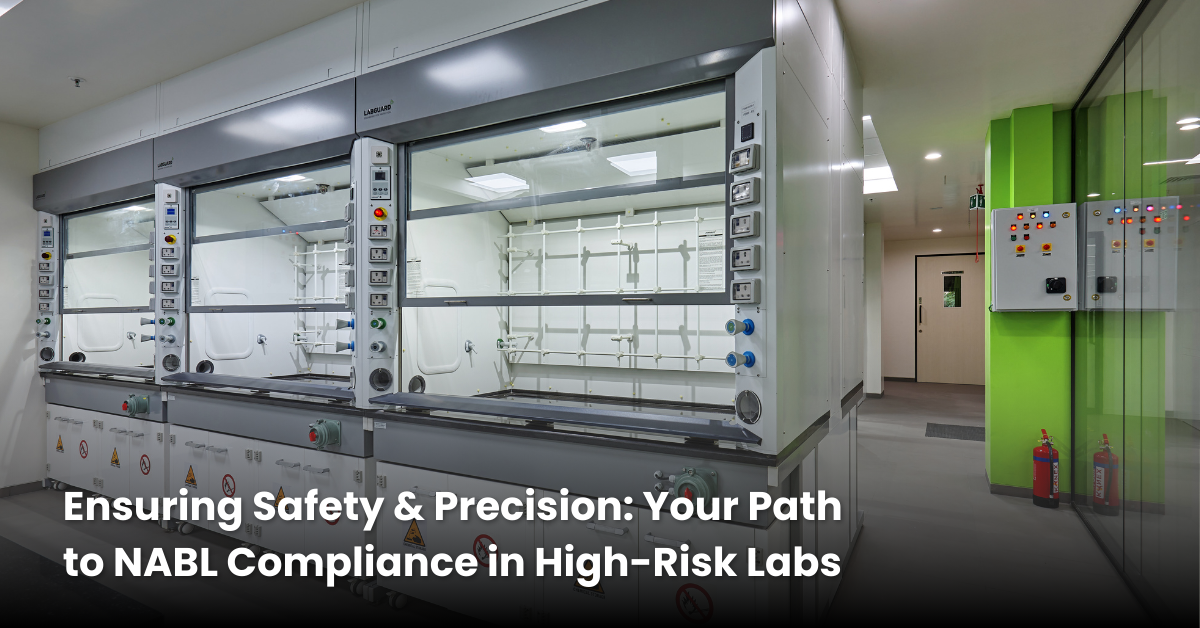In high-risk labs—such as those in the chemical, pharmaceutical, and biotechnology sectors—ensuring compliance with NABL (National Accreditation Board for Testing and Calibration Laboratories) standards is critical. NABL accreditation guarantees safety, efficiency, and regulatory adherence, safeguarding personnel and the environment.
This guide highlights the essential steps to achieve NABL compliance, with a focus on safety standards, lab design, and regulatory requirements.
Key NABL Safety Standards for High-Risk Labs
-
Ventilation and Fume Hoods:
Advanced ventilation systems and compliant fume hoods prevent exposure to hazardous fumes and ensure a safe workspace.
-
Waste Management:
High-risk labs must have secure waste disposal systems to handle hazardous materials, preventing contamination and accidents.
-
Fire Safety:
NABL standards require fire alarms, suppression systems, and emergency exits designed for labs handling flammable substances.
-
Emergency Protocols:
Clear evacuation plans, first aid stations, and safety drills are mandatory to handle emergencies effectively.
Design Considerations for NABL-Compliant Labs
- Optimized Layout: Dedicated areas for hazardous material handling, storage, and emergency equipment ensure safety and efficiency.
- Durable Materials: Construction materials must resist fire, corrosion, and chemical reactions to withstand high-risk operations.
- Equipment Placement: Strategic placement of fume hoods and safety gear minimizes risks and ensures accessibility.
- Ventilation Systems: Advanced air circulation systems prevent the buildup of harmful gases, ensuring a safe environment.

Steps to Achieve NABL Compliance
- Initial Assessment: Evaluate your lab’s current safety, equipment, and procedural compliance.
- Design Upgrades: Implement modifications like enhanced ventilation, fire safety systems, and optimized layouts.
- Documentation: Maintain detailed records of safety protocols, equipment logs, and lab procedures.
- External Audit: Schedule an NABL audit to verify compliance with safety and operational standards.
- Continuous Monitoring: Regular audits and updates to safety protocols ensure ongoing compliance.
Common Mistakes to Avoid
- Neglecting Ventilation Requirements: Inadequate ventilation can lead to non-compliance and safety risks.
- Improper Waste Management: Non-compliant waste handling can cause serious hazards and regulatory issues.
- Lack of Staff Training: Ensure all personnel are trained on NABL safety protocols and emergency response procedures.
- Outdated Safety Protocols: Regularly review and update protocols to align with evolving standards and technologies.
Conclusion: Ensuring a Safer Future
Achieving NABL compliance ensures a safe, efficient, and regulatory-compliant laboratory environment. By following NABL standards, high-risk labs can minimize hazards, protect personnel, and maintain operational excellence.
At ScienceByDesign, we specialize in designing and building NABL-compliant labs tailored to your sector’s unique needs. From advanced ventilation systems to optimized layouts, our turnkey solutions ensure your lab is safe, efficient, and future-ready. Contact us today to create a compliant laboratory environment that meets the highest standards.

